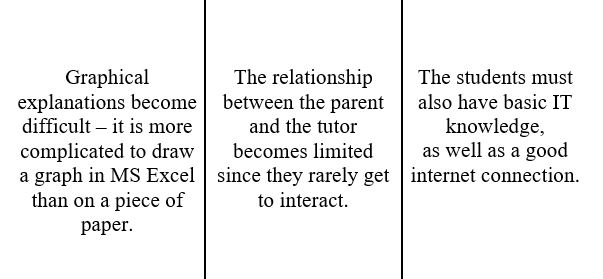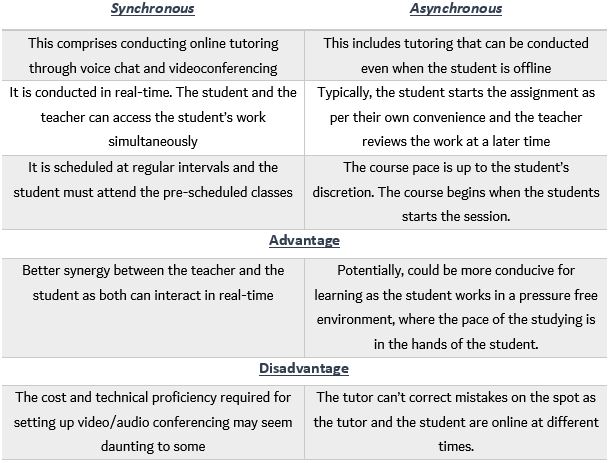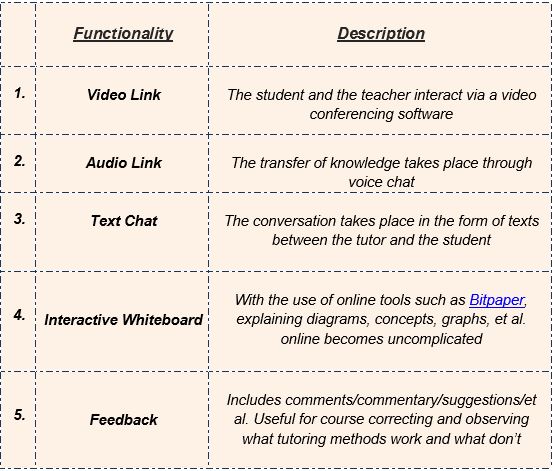Online tutoring refers to delivering lessons through online mediums, mostly in the physical absence of the tutor. As early as 1996, the use of the internet gave way to the initiation of asynchronous online tutoring. Since then, various developments in the field have been witnessed, thereby making it as efficient as today. Online tutoring is said to have upended the traditional classroom setup, but it is still known to use some conventional methods of teaching that have proven to work wonders even in the traditional classroom. The online mode of teaching has helped overcome the geographical barriers in learning and has thereby made it easier for students to pursue courses of their choice, even without being physically present for the same.
Benefits of Online Tutoring
- This approach to teaching does not pose any geographic limitations and enables the same knowledgeable tutors who conduct face-to-face classes to administer learning but via new means. Thus, this frees the tutors from having to travel to the tutee’s location, and the sessions can be arranged as per the convenience of the tutee. Also, impromptu sessions in case of doubts or for understanding specific topics can also be easily arranged.
- Online learning is becoming fast prevalent in universities and the job sector. Students opting for online tutoring become familiar with the commonly used online learning tools early.
- With the presence of personal computers and the internet in the majority of households, online tutoring has quickly established itself as a legitimate medium of knowledge transfer. Moreover, various government-officiated tests and exams are now being conducted online. This is a testament to the fact that the internet is now an essential tool for education and learning.
Its Potential Downfalls

Synchronous v/s Asynchronous Online Tutoring

One-on-One v/s One-to-Many Teaching
According to various surveys and studies, most students prefer one-to-one learning as opposed to being taught as a group. However, this comes with its own challenges.
The training that most tutors receive prepares them on how to attend a class. Thus, a one-on-one situation may prove to be uncomfortable. Another problem arises when the relationship between them becomes blurred. This situation occurs when the teacher-tutor interaction becomes familiar since the entire focus of the tutor is on a single tutee.
Conversely, this undivided focus on the strengths and weaknesses of a single student can be conducive to the student’s growth. As a consequence of this focused attention, the teacher is able to tailor the study structure based on a single person’s need, and not to those of a group of unique proficiencies.

- The relatively recent and reliable presence of certain key technology has added another crucial facet to the ecosystem of online teaching. That facet is Live Online Tutoring.
- Live Online Tutoring entails the student and the teacher interacting in real-time. This ensures that clear communication takes place between them.
- This form of tutoring closely resembles traditional face-to-face tutoring, although it is not a complete education per se.
For further reading, refer this Emerging EdTech webpage for a fascinating insight into the benefits and drawbacks of Online Teaching. You can also read about One-to-One teaching in-depth at this TEFL & TESOL Training webpage.
You can also read our article about the best practices associated with effective online tutoring here.
For further reading related to education methodologies, visit our blog page.
Create.Engage.Inspire















